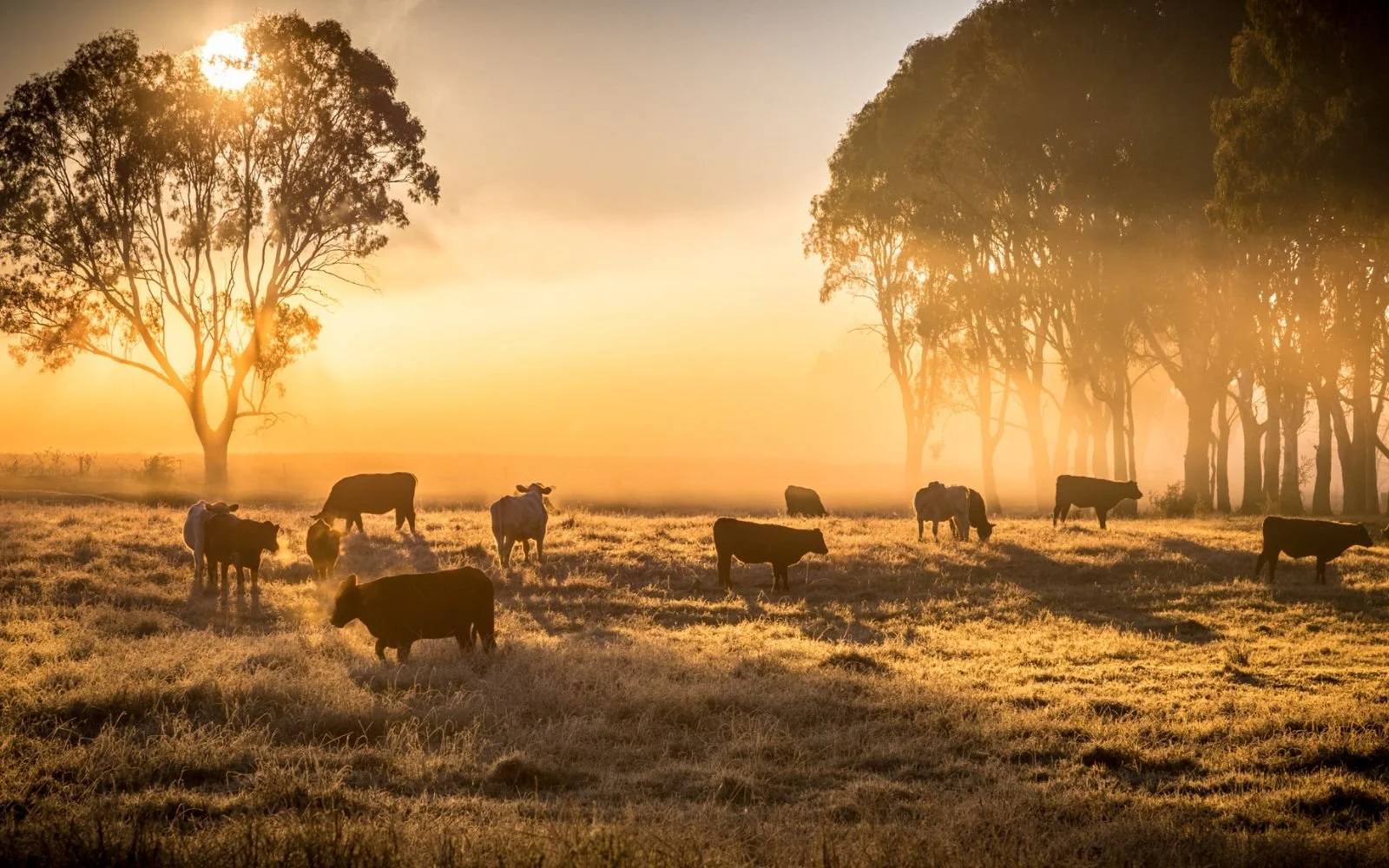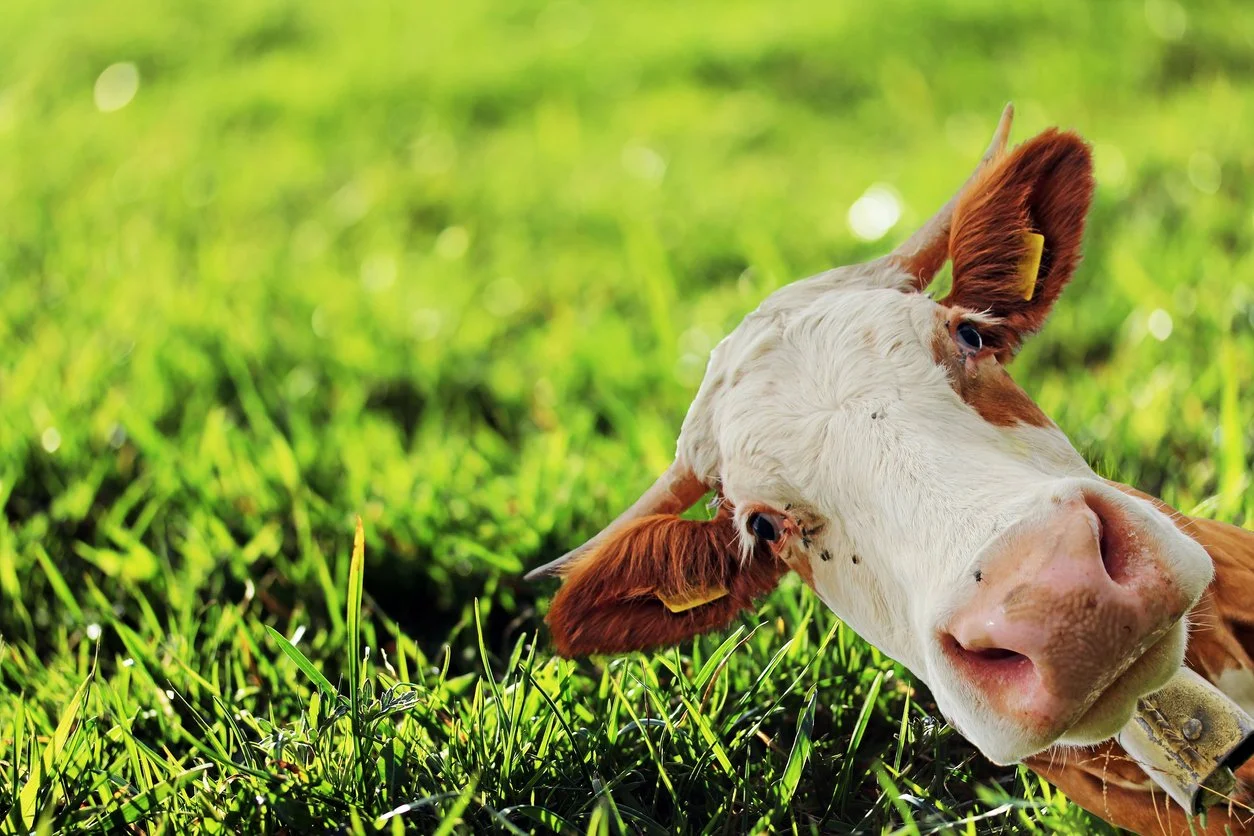What Is Grass-Fed Beef? How It's Different
Discover > Farm to Table Eating in Texas > What Is Grass-Fed Beef? How It's Different
In Texas, farmers and ranchers use a variety of different methods to raise their cows. One particularly popular method is practiced all across the Lone Star State, and that is the production of grass-fed beef (What wine goes well with beef?). But what exactly is grass-fed beef? Labels on meat products can be super confusing, but we’re here to help you get familiar with this special term.
Raising grass-fed beef involves employing grazing practices that emulate what cattle would experience in the wild. Back in 2007, the US Department of Agriculture (USDA) established specific standards for beef products to be categorized as grass-fed meat. These standards specify that cattle should be fed through foraging or pasturing in open fields during growing seasons, with the exception of feeding on milk before being weaned. What’s more, the cattle should not be fed any grain or grain-based byproducts.
So why does grass-fed beef have the edge over regular choice cuts commonly found in any Texas butcher’s shop? Well, it turns out there are plenty of reasons why, including the nutritional value of the meat, the product’s taste, and its impact on the environment. Let’s explain What is grass-fed beef, And how it’s different from the normal one.
Nutritional Value of Grass-Fed Beef
Many studies have shown that grass-fed beef packs higher amounts of nutrients and minerals compared to conventionally produced beef cuts. This is because grass-fed beef is leaner and contains less fat and fewer calories compared to grain-fed beef, which is often produced using growth hormones.
Additionally, grass-fed beef has higher levels of omega-3 fatty acids, vitamins A and E, and conjugated linoleic acids (CLA), which help lower cholesterol, blood pressure, and even the risk of diabetes and cancer. Also, since grass-fed beef is produced from cattle fed solely on pasture, you can be sure that no artificial bulking supplements are given to the cows.
Grass-Fed Means More Flavor
It’s been argued that grass-fed beef offers a “fuller” beef flavor, as cattle are allowed to freely graze and forage for naturally occurring foods. Moreover, as they have ample space to move around, muscle and fat are able to develop naturally in the cows, like they would in wild cattle.
Of course, one also has to consider the genetics, age, and gender of the cattle, as well as the stressors they are exposed to. All things considered, grass-fed beef takes a longer time to develop that distinct marbling we all know and love, which makes it more likely to be graded as select or choice rather than prime.
When it comes to taste, the time taken to transport the cows to slaughter is also super important. Therefore, if you want to get your hands on the best cuts of grass-fed beef, be sure to buy from local Texas cattle farms. This is important as the more time the cattle spends in transit, the more stressors they have to face, causing the cows to tense up and the cuts of meat to be tougher and chewier.
Animal Welfare and Environmentally Conscious Meat-Eating
One of the advantages of opting for grass-fed meat is that it’s produced with the environment in mind. There are a plethora of grass-fed cattle farms in Texas that practice sustainable approaches, meaning you have plenty of choices when it comes to purchasing delicious, responsibly raised beef in the Lone Star State.
One cattle-raising method employed by farmers is called “rotational grazing”. This involves cattle being rotated around grazing fields to give them ample sources of fresh food, while also letting the ground recover and thrive from the cow manure. What’s more, as opposed to conventional feedlot setups in cattle factories, this degree of added freedom makes for happy and healthy cows.
Where to Get Your Grass-Fed Beef in Texas
Knowing your local cattle farmers is a huge plus when it comes to stocking your pantry with your favorite meat cuts. Developing a relationship with meat producers allows for avenues of trust and lets you get familiar with their farming practices, which are ideally in line with your preferences. Next time you’re at your local farmers’ market, strike up a conversation with a local cattle farmer. Farmers’ markets are great places to learn about livestock raising methods and anything else you want to know about the produce you buy.
Because grass-fed beef is sold at a higher price than its conventional grain-fed counterpart, it’s more economical to buy it in bulk. Some Texas cattle farmers specialize in selling grass-fed beef shares, and you can often purchase your beef in halves or quarters. But if you don’t have the freezer space, then perhaps try a meat subscription that sends out a variety of delicious grass-fed cuts straight to your doorstep. Buying larger amounts will bring down costs and allow you to enjoy quality beef, all in one.
Cattle-raising is an integral part of Texas farming culture, with many of the state’s farms being several generations old. For me, it’s exciting to see how many cattle ranches are transforming their raising methods to include more responsible and environmentally sustainable approaches.
Need fresh grass-fed beef around Austin? Just click here!
Too busy to visit shops that offer fresh meats? Check out these 9 Farms Providing Fresh Grass-Fed Meat Delivery in Texas.
Looking for farm fresh meat? Visit these 6 Butcher Shops in Dallas For Farm-Fresh Meats.
For your Ultimate Raw Milk Resource Guide, click here.
Interested to learn how to cook steakhouse quality steaks? Click here.





